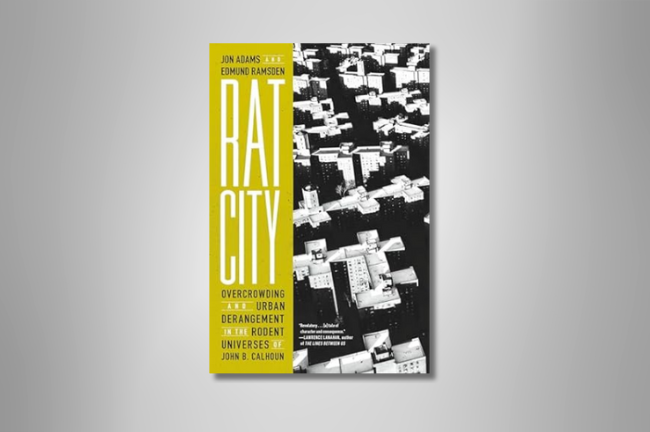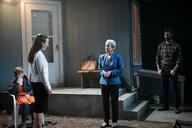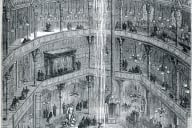You have /5 articles left.
Sign up for a free account or log in.

Melville Press
By the early 1970s, three pieces of behavioral research from the previous decade or so were so extensively discussed in American news media that they counted as common knowledge. Two of them still do.
One was Stanley Milgram’s work on authority and obedience, better known as the shock experiments. The other, conducted by Philip Zimbardo at Stanford University, went down in history as the Stanford prison experiment. If I provide links here in lieu of descriptions, it is with reasonable confidence that the names alone will prompt many readers to recall the studies themselves. The implications were disturbing, an effect compounded by a degree of theatrical flair embodied in the experiments’ design. That may in part account for both of them ending up on the movie or television screen—and each more than once.
A third research project also loomed large in the public imagination half a century ago, and it, too, was dramatic in form and troubling in substance. But fascination with it began to wane by the end of the decade, and it never reached the almost folkloric status of the other two as dark revelations of human nature. The story is told with an abundance of historical context in Jon Adams and Edmund Ramsden’s Rat City: Overcrowding and Urban Derangement in the Rodent Universes of John B. Calhoun (Melville House). As if to make up for such long neglect, the experiment will be chronicled again by Lee Alan Dugatkin in Dr. Calhoun’s Mousery: The Strange Tale of a Celebrated Scientist, a Rodent Dystopia and the Future of Humanity (University of Chicago Press), out this fall. The latter volume is not at hand, but Rat City was sufficiently absorbing to make reading another book on the subject a welcome prospect.
The understanding of John B. Calhoun’s research that circulated in the 1960s and ’70s runs something like this:
Calhoun built a large but enclosed living space suitable for housing several “colonies”—that is, subpopulations of 10 to 15 rats each, as found in wild, rural or urban settings. The residents enjoyed ready access to food and water, with no predators (or exterminators) to fear. Life was good.
The rats initially behaved much as they would in the outside world. Males fought enough to establish a dominance-status hierarchy without doing serious damage to one another. Aggression between males from different colonies was inevitable but seldom fatal. For their part, female rats signaled when they were ready to mate and, no less clearly, when they were not interested. Certain courtship protocols existed, or did under normal conditions.
The rats soon doubled in numbers, then doubled again and kept on growing while the space available remained the same. The consequences were not Malthusian, exactly, since all rats had enough to eat and drink. But as the population grew denser, it placed a strain on social norms. Alpha males faced more frequent challenges to their territorial claims and grew more violent in defending them. Aggression of all sorts increased. The battle scars on males grew more numerous and severe and the courtship routines disappeared, replaced by new patterns of behavior.
Some young males made no effort to mate and withdrew into isolation. Others persisted when the females rejected their advances. And groups of males emerged that were exclusively homosexual. Infant mortality skyrocketed, with some mothers committing infanticide. There was cannibalism.
After a few generations of the “behavioral sink” (Calhoun’s term for the implosion of social norms accompanying the demographic explosion), the population size began to collapse from violence and declining birth rates. Calhoun moved young “refugee” rats to the company of normal rats, only to find they could not integrate into their society. They were damaged at some fundamental level.
The details just recapped sounded in tune with the more pessimistic moods of the day. Calhoun’s project is often framed as an experiment in utopia building, something like a generous welfare state—one in which everyone’s needs are met, only for “the affluent society” to devolve into savage anarchy from the combination of unchecked growth and absolute permissiveness.
Environmental crisis was a recent addition to the social concerns of the day, and the fate of Calhoun’s rats seemed like evidence in favor of calls for zero population growth. And analogies to conditions in America’s inner-city neighborhoods—or to the swelling populations of third-world countries—were usually in the offing, whether or not the implications of comparing them to a mass of rats were acknowledged.
To be clear, these were not Calhoun’s interpretations of his own work. As an ethologist—author of a definitive standard treatise on the social organization of the Norway rat—he was cautious about extrapolating from findings about one species to conclusions regarding another, much less species separated by about 80 million years of evolution.
Adams and Ramsden depict Calhoun as an extraordinarily painstaking researcher—carrying out not one dramatic experiment, rich with potential for speculation, but rather a series of three projects of increasing complexity across almost 30 years.
Overpopulation was not his initial interest, which instead focused more generally on the relationship between social behavior and spatial configuration. His first rat compound, set up in 1948, was modeled on the features of a Baltimore city block, with 11 colonies forming.
“Most of the time,” the authors report, “animals in separate colonies could keep out of one another’s way. But when they came to the grain hopper or the water trough, the chances of meeting rats from a rival colony increased.” Calhoun and his assistants kept extremely detailed records of individual rats’ movements, including fights and matings, as well as their affiliations to the distinct colonies. Two years of observation required four or five more of analysis, resulting in a comprehensive mapping of social structure as well as the effects of geography of their living space, which broadly resembled that of rats in the urban wild.
In his two subsequent rat projects—carried out in the late 1950s and the early ’70s—Calhoun created spaces that required more social interaction in moving between the home colony and dining area. And as recounted above, demographic pressure turned them into hellscapes. (The final project replicated some of the earlier results with mice.) The authors suggest that Soylent Green, a dystopian film from the 1970s set in an overpopulated future, may have taken its inspiration from reports of Calhoun’s work. Then again, Rat City doubles as a cultural history of mid- and late-century speculations on potential social collapse. If Calhoun had not provided such a horrifying scenario, another one would likely have turned up.




